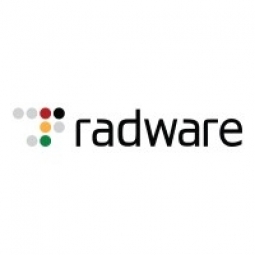Play65.com Helps Users Play it Safe with Radware’s Integrated APSolute Application Delivery Solution

Customer Company Size
Large Corporate
Country
- Worldwide
Product
- Radware’s Defense Pro
- Radware’s Application Front End (AFE)
- Radware’s Insite
Tech Stack
- Network Security
- Load Balancing
- Global Traffic Redirection
- SSL Attack Protection
Implementation Scale
- Enterprise-wide Deployment
Impact Metrics
- Customer Satisfaction
- Revenue Growth
- Brand Awareness
Technology Category
- Cybersecurity & Privacy - Network Security
- Networks & Connectivity - Network Management & Analysis Software
Applicable Functions
- Business Operation
Use Cases
- Cybersecurity
Services
- System Integration
- Software Design & Engineering Services
About The Customer
Play65.com is a widely popular online skill-based gaming site and a proven leader in its industry. Through its online platform, the company unites thousands of players around the world and allows them to play against each other - either for recreation or for actual monetary profit. Currently, the company is running the largest online backgammon room. Play65.com offers its services in 17 languages with 24/7 online support and assures its players complete account, transaction and software security. The company provides an online skill-based gaming platform for players from all around the world and its business revenues are derived from a fee it charges winning players. Network performance is therefore a pivotal concern for Play65.com since it’s the backbone of its revenues and is densely trafficked on a regular basis. Play65.com conducts nearly 18 million games a month and therefore holds more than 2 million hits a day on its servers.
The Challenge
Play65.com, a leading online, skill-based gaming platform provider, was looking for an integrated solution to optimize and secure its network performance. Any network faults would cause Play65.com immediate revenue loss in tens of thousands of dollars per hour and damage to its reputation. Therefore, Play65.com was looking for an application-level solution to assure network availability, performance and full security for the more than 2 million hits a day on its servers. Web-based services are an integral part of Play65.com’s business model. The company provides an online skill-based gaming platform for players from all around the world and its business revenues are derived from a fee it charges winning players. Network performance is therefore a pivotal concern for Play65.com since it’s the backbone of its revenues and is densely trafficked on a regular basis. Play65.com conducts nearly 18 million games a month and therefore holds more than 2 million hits a day on its servers. From a business profitability point of view this means that if the company’s network went down, it could stand to loose approximately about $20,000 per hour.
The Solution
Play65.com deployed Radware’s Defense Pro for the combination of both signature and advanced behavioral-based protection. In addition, DefensePro integrates multiple layers of security including signature-based protection, protocol anomaly protection, access control and bandwidth management. Play65.com also deployed Radware’s Application Front End (AFE) solutions to assure load balancing, global traffic redirection and SSL attack protection and was able to efficiently and centrally manage all devices by utilizing Radware’s Insite. Play65.com chose to deploy Radware’s DefensePro-3020 for its advance security features. Play65 had battled with a specific reoccurring network attack which compromised the availability and security of its online gaming platform. Using Radware’s customizable signature engine, DefensePro- 3020 allowed the creation of a signature based protection which completely terminated the attack thus allowing continuous transaction flow and security. In addition, DefensePro’s adaptive behavioral technology automatically learns the normal network baselines and protects against zero day DoS/DDoS attacks within 18 seconds. This allowed Play65.com to employ dynamic protection measures, blocking network floods and traffic anomalies without user intervention or the need to constantly monitor and tune the system.
Operational Impact
Quantitative Benefit

Case Study missing?
Start adding your own!
Register with your work email and create a new case study profile for your business.
Related Case Studies.

Case Study
Enel Secures Italian Power Generation Network
Electric energy operators around the world are working to increase the reliability and cyber resiliency of their systems. This includes Enel, a global power company that manages and monitors the Italian power grid. This grid:• Serves 31 million customers• Has a net installed energy capacity exceeding 31 gigawatts• Includes more than 500 power generation plants,including hydroelectric, thermoelectric, and wind• Is managed and monitored by Enel 24/7/365• Is operated by Terna, the Italian Transmission System Operator (TSO)Enel is responsible for the availability of the grid’s underlying ICS and industrial network. It also manages Regional Control Centers and Interconnection Centers which connect with the TSO. The TSO manages the flow of energy to the grid plus controls and remotely regulates the power generation of power plants, increasing and decreasing power production as required. The complex system of interaction and cooperation between Enel and the TSO has strong security implications as well as operational and business challenges.

Case Study
Securing the Connected Car Ecosystem
In-vehicle communications and entertainment system hosts high-value or sensitive applications. API libraries facilitate communication and sharing of vehicle data. These API libraries are vulnerable to reverse engineering and tampering attacks and may even result in loss of passenger safety. Attackers can inject malware that may be able to migrate to other in-car networks such as the controller-area-network (CAN) bus which links to the vehicle’s critical systems. Software provided for dealers to interface with cars through the OBD2 port is vulnerable to reverse engineering and tampering attacks. Hackers may be able to abuse these tools to inject malicious code into the ECUs and CAN bus. Attackers can lift the cryptographic keys used, and use that to build their own rogue apps/software. Their cloned version of the original app/software may have altered functionality, and may intend to gain access to other in-car networks.

Case Study
Secure and Cloud-based Data Marketplace
The great promise of new connected concepts of industry like 'Industry 4.0' is their ability to deliver a historically unparalleled level of responsiveness and flexibility. While modern supply chains are already heavily integrated and designed to be fluid and fast moving, a large swathe of manufacturing still remains beholden to economies of scale, large production runs, and careful preplanning.The Industrial Internet of Things (IIoT) is set to change this by allowing small-batch or even custom manufacturing on a truly industrial scale. With machines whose functions are not set in stone, but flexible and determined by their operating software and with a new form of connectivity bringing industrial engineers, product manufacturers, and end users closer together than ever before. Ad-hoc adjustments to automotive parts, for example, during active product runs or the bespoke manufacturing of custom sneakers become very viable options indeed.Much of this remains a theoretical vision, but IUNO, the German national reference project for IT security in Industry 4.0 demonstrates the new capabilities in action with a secure technology data marketplace running a smart drinks mixer.

Case Study
Expedia Hosted by 2lemetry Through AWS
Expedia is committed to continuous innovation, technology, and platform improvements to create a great experience for its customers. The Expedia Worldwide Engineering (EWE) organization supports all websites under the Expedia brand. Expedia began using Amazon Web Services (AWS) in 2010 to launch Expedia Suggest Service (ESS), a typeahead suggestion service that helps customers enter travel, search, and location information correctly. According to the company’s metrics, an error page is the main reason for site abandonment. Expedia wanted global users to find what they were looking for quickly and without errors. At the time, Expedia operated all its services from data centers in Chandler, AZ. The engineering team realized that they had to run ESS in locations physically close to customers to enable a quick and responsive service with minimal network latency.
.png)
Case Study
OTA Software Updates for Smart Energy (gridX)
gridX has a requirement for over-the-air software updates for their gridBox devices and used the Yocto Project for their builds. The driver for the requirement was having the ability to quickly support new features, as well as deploying bug fixed and path known security vulnerabilities. New software updates with a US stick manually to all gridBox devices in the field would be prohibitively expensive and labor-intensive.

Case Study
Transformed IT Infrastructure Improves Business Agility
A global security, storage, and systems management software provider planned to demerge into two separate companies. To prepare, it undertook a major overhaul of its IT infrastructure and operations strategy. A key requirement: streamlining the Hosting Group, which handled compute, storage, and middleware operations. These functions had grown complex and had a wide geographic distribution. The company planned to bring them under closer in-house management.The company looked to increase its business agility so it could quickly and creatively respond to customer demands with improved internal collaboration and optimized go-to- market and IT service delivery capabilities. Modernizing IT functions, and making them more responsive, was critical to achieving these goals.






